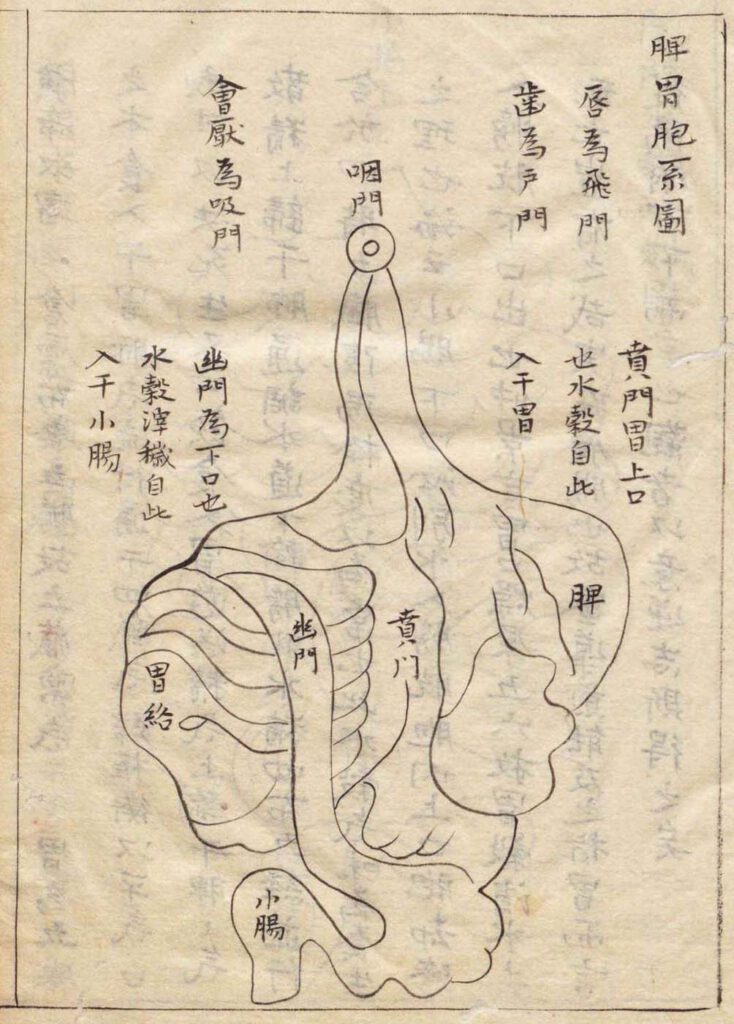

No title. The spleen-stomach system. Kajiwara Shōzen 梶原性全 (1265–1337) Man’anpo 万安方, 1315–27, scroll 54. Edo 江戸 period (1603–1868) manuscript. National Archives of Japan.
‘Illustration of the spleen-stomach system’, Piweibao xi tu 脾胃胞系圖. Wang Haogu 王好古 (1200–64?) The Great Teaching of Yi Yin’s Decoction Classic Propagated by [Zhang] Zhongjing, Yi Yin tangye Zhongjing guang wei dafa 伊尹湯液仲景廣爲大法, 1234. Japan, Edo 江戸 period (1603–1868) manuscript. National Archives of Japan.
Spleen and stomach are a closely connected organ pair that is responsible for the first stage of digestion, which involves extracting nourishing ‘grain qi ’ from ingested foods. Once grain qi is extracted, it travels upwards to the lung, which help to spread it throughout the entire body. The dregs of this digestive process—that is the ‘decomposed and cooked’ food that is left behind after the nourishing grain qi has been extracted—are passed on to the small intestine. The image offers a graphic representation of the throat (yan men 咽門), oesophagus (wei guan 胃管), stomach (wei 胃), spleen (pi 脾), and the small intestine (xiao chang 小腸), while textual inscriptions of the image indicate the ‘gates’ that connect these viscera to each other. These are, firstly, the ‘upper mouth of the stomach’ (wei shang kou 胃上口) or ‘Rushing gate’ (ben men 賁門), and, secondly, the ‘lower mouth of the stomach’ (wei xiakou 胃下口), or ‘Dark gate’ (xuan men 幽門). ‘Rushing gate’ is the gate through which food enters the stomach, and the site where the oesophagus penetrates the diaphragm and merges with the stomach. ‘Dark gate’, in turn, is the door through which digested food passes on its way from the stomach to the small intestine.